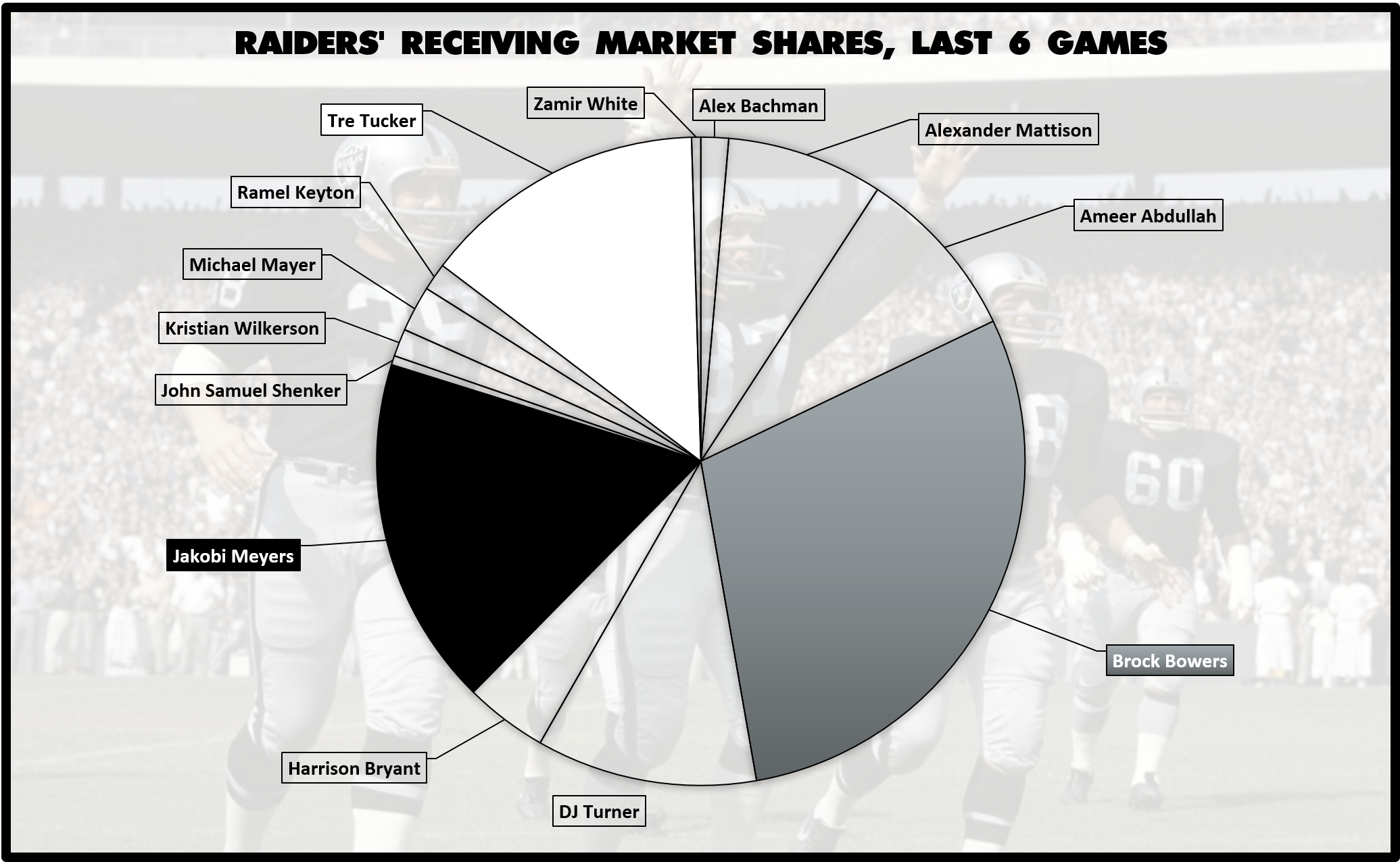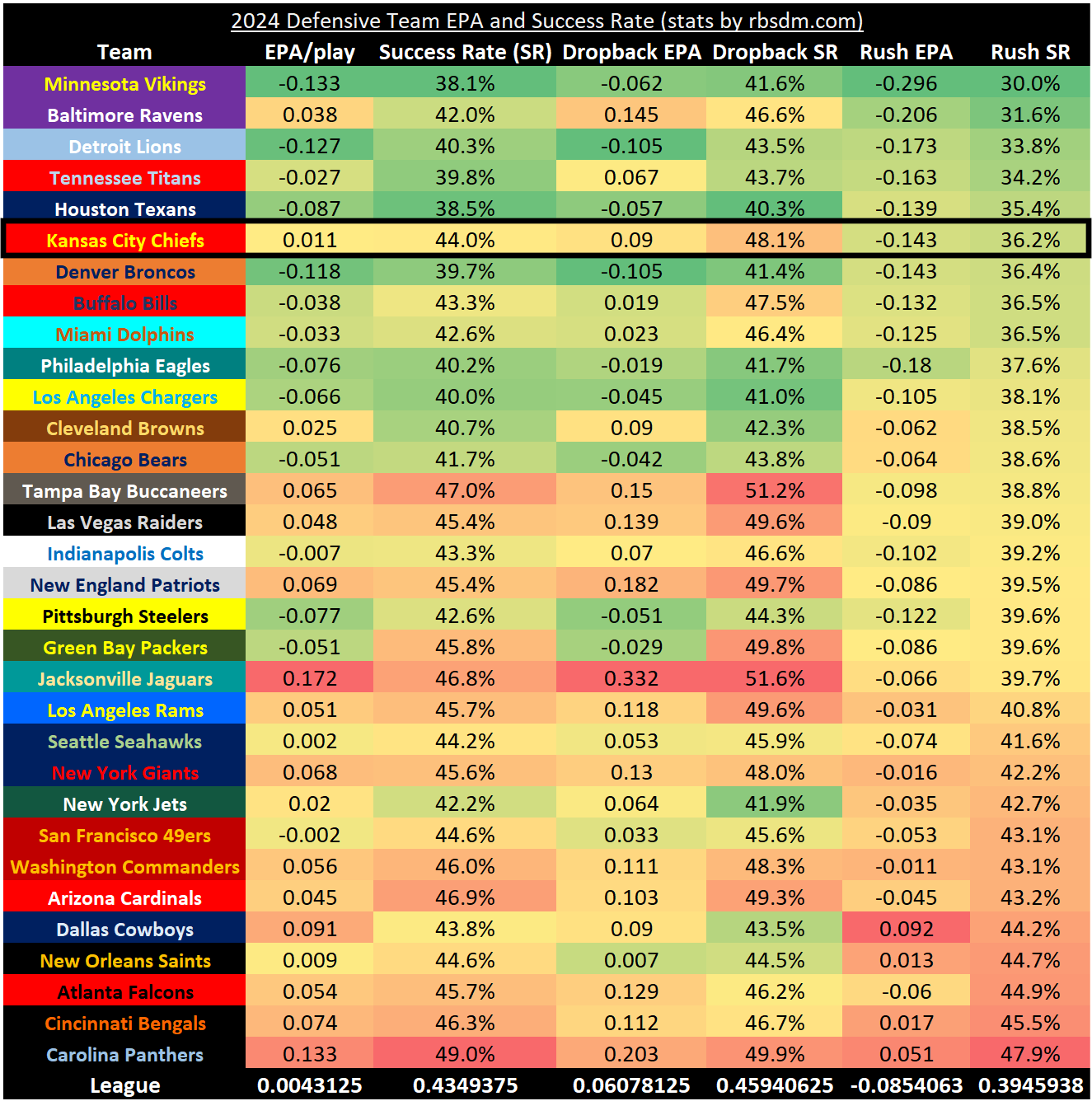
Quick Slant: Black Friday - Will It Be a Black and Silver Friday, or Will the Raiders Be Seeing Red?
Raiders @ Chiefs, Friday @ 3:00 PM
In the autumn of 1959, Lamar Hunt paced his office. Professional football – a sport he loved – was growing, but the NFL had turned its back on him. When he proposed bringing a team to Texas, the league's owners scoffed at this naive oilman, this hopeless football market of Dallas that he had proposed, or the need to push expansion any further after recently adding three teams from the AAFC. Their rejection churned like crude, bubbling up from a well – oozing, explosive, and unquenchable – Hunt couldn’t let it go. He stared out over the wide expanse of Dallas. If the NFL would not grant him a seat at theirs, he would build his own damn table.
His phone calls began: fellow oilman Bud Adams, out of Houston; Ralph Wilson, an insurance magnate who saw Buffalo as a market with a potentially loyal fan base; Barron Hilton, son of Conrad, from Los Angeles; Bob Howsam, who owned a minor league baseball team in Denver; Boston Real Estate developer Billy Sullivan; broadcast entrepreneur Harry Wisman, who wanted to challenge for New York; and Minneapolis real estate mogul and owner of the Lakers, Max Winter. The group of eight was called “The Foolish Club,” for no one could challenge the NFL and its iron grip on the gridiron.
They worked tirelessly, sketching schedules on notepads, signing players with handshakes, and striking a deal with an up-and-coming television network known as the American Broadcasting Company, which had been trying to transition from radio. And in the 25th hour, Winter, the Minnesota real estate developer, failed to secure the proper funding, losing his bid.
In swooped a team of eight partners, who won it and founded the initial black and gold Oakland Raiders, dropping them at Kezar Stadium, then home of the NFL’s 49ers. Their first preseason game? Hunt’s Dallas Texans. The Texans’ first regular season game? A loss to the Los Angeles Chargers and their brash innovator at offensive coordinator, Al Davis.
The NFL, facing new competition, not only expanded but did so immediately, and it did so in Dallas. The Cowboys were also founded in 1960. By 1963, the Texans had seemingly lost the market, and fighting over the Cotton Bowl had become frustrating, so they took the Chisolm Trail to Kansas City and became the Chiefs as we know them. That same year, Al Davis took over as coach and general manager of the Raiders and turned them over to their iconic black and silver.
The Chiefs, Raiders, Chargers, and Broncos were in the same division then, as they have been 64 concurrent years. As such, the AFC West is a jumbled causal loop diagram of loathing; all four despise the other three. And yet, perhaps none share the bitterness and disdain for each other the Chiefs and Raiders have, where winning is critical regardless of the disparity in their records.
Raiders’ Implied Team Total: 15
It was late in the fourth quarter against Denver. Gardner Minshew stood in shotgun, arms forward, guts clenching with each staccato command. Brock Bowers passed between him and the center before leisurely coming to a near stop. Suddenly, the snap; Bowers was covered. Jakobi Meyers was covered. A blitzing Ja’Quan McMillan was growing close in the collapsing pocket. Minshew tightened up and jutted forward, bracing for impact, but the right side of the pocket opened up, and he made a break for it. Unbeknownst to him, Cody Barton was closing in from behind, but Minshew could only see the smothering presence of Jonathon Cooper in front of him, arms high, salivating to make the play. They all met; Cooper wrapped his arms around him and spun as if Minshew were a discus. As he came around, Barton drove him to the ground beneath his weight – a hammer to the nail of Minshew’s upper body. Minshew’s collarbone cracked. And the season was over.
In the wake of Minshew’s season-ending injury, the Raiders will turn to Aidan O’Connell. O’Connell had been the starter when he broke his thumb in Week 7, having taken over after Minshew was benched for poor performance in Week 3; O’Connell went on IR and handed the keys back to Minshew then. Now, he gets a clear runway to return to the post he had been holding.
O’Connell was no great shakes before the injury. He went 10/20 for 94-0-1 against Denver, then 27/40 for 227-1-1 against Pittsburgh. He was underwhelming again against the Rams the week after before the injury bug claimed him. In Weeks 4-6, O’Connell ranked 27th among QBs with at least 60 snaps in EPA + CPOE Composite.

O'Connell was also the Raiders starter for most of 2023. He led the team throughout the surprising back half of the year after Antonio Pierce took over for Josh McDaniel as interim coach in Week 9, inheriting a 3-5 team. He led them immediately to a 30-6 victory against the Giants, with whom he had won the Super Bowl as a player, and this was only the tip of the spear. Pierce ultimately led the Raiders to 8-9, including one of the most lopsided victories of the season against the Chargers in an island game and a win over the eventual champs, these Chiefs; O’Connell was under center for it all.

The Raiders haven’t been successful as an offensive unit all season. They rank dead last in EPA per play and 26th in offensive success rate. They rank 28th in EPA per dropback and 17th in success rate on dropbacks.

The Chiefs are 17th in EPA per play allowed and defensive success rate. They rank 27th in EPA per dropback allowed and defensive success rate per dropback. They allow the ninth-most fantasy points to QBs and the 12th-most to WRs.
The Chiefs run the fifth-highest rate of man defense at 36.1%. They run zone at the fourth-lowest rate. Their primary alignment is Cover 1, followed by Quarters. They run the second-most Cover 0 in the league, although the rate is still at just 7.4%.
Against the types and rates of coverages the Chiefs prefer, the best Raiders’ passing game weapon is easily Bowers, who ranks sixth in Fantasy Points’ Matchup Expected Points model this week among all WRs and TEs. No other Raiders’ WR or TE ranks within the top 70 except Meyers, who barely sneaks in at 70th.
Bowers leads the way in market share in the past six games, with a whopping 29%. Since Week 6, this is the second-highest market share among TEs, tied for ninth across all positions. Meyers isn’t far behind with a 27% share. Tre Tucker is the only other player who approaches a 15% share, although he is technically just below that threshold at 14%.

The Raiders have maintained an average of 65 offensive snaps per 60 minutes, which is middle-of-the-pack. This seems somewhat remarkable based on the offense's inefficiency in general, but Las Vegas has taken an average of 25.6 seconds to snap at the line, which is sixth-fastest. Much of this is driven by the fact that the Raiders have played 380 snaps from a deficit of seven or more points, tied with the Giants for the absolute most. The Raiders move faster at 22.9 seconds to snap when trailing by as much.
One might assume that the Raiders are predisposed to run with Pierce, a former linebacker, as head coach, but that is not so. The Raiders rank 12th in pass rate over expected (PROE) and tied for fifth in neutral pass rate. Their preference is to pass.
Perhaps this is motivated by their inability to run. The Raiders are last in the league in EPA per rush and offensive success rate on rushes. Alexander Mattison averages 3.3 YPC, and Zamir White averages 2.8. They each have negative FPOE. Both RBs are injured and missed Week 12. If one is closer to returning this week, it would be Mattison, who logged limited practices on Tuesday and Wednesday; White, who is yet to practice, seems like a longer shot to play.
The Raiders’ run blocking has been poor. They rank 27th in PFF run blocking grade and 30th in offensive adjusted yards before contact (YBC)/ATT generated. Conversely, the Chiefs allow 1.26 defensive adjusted YBC/ATT allowed, tied for best in the league. This gives the Raiders’ run-blocking unit the second-worst situation of the week.

The Chiefs’ run defense has been among the best units of the year; they have the sixth-highest PFF grade for team run defense, the third-fewest rushing fantasy points, the seventh-highest EPA per rush allowed, and the sixth-highest defensive success rate on rushes.

If White and Mattison can’t go, the work should go to Ameer Abdullah and Sincere McCormick in a committee approach. As poor as they looked a week ago against a tough Denver defense, these two combined for one of the Raiders’ best outcomes of the year on the ground, efficiency-wise.

Each has positive FPOE, making them the only RBs on the roster who do. Abdullah is far more valuable due to his work in the passing game, especially as the Raiders will likely face a negative game script.

Chiefs’ Implied Team Total: 27.5
The Chiefs have spent much of the season as the best team in the league in the minds of the masses. According to the Pythagorean Wins model, they are significant impostors, having won over five more wins than they should have. Based strictly on this mathematical rule of thumb, the Chiefs are due for considerable regression.


